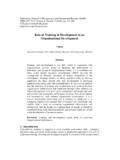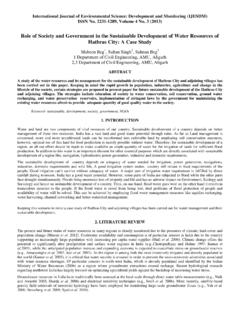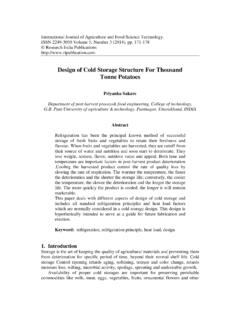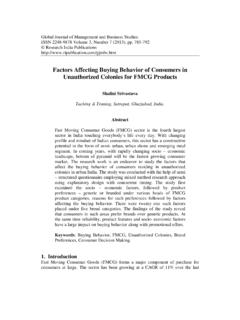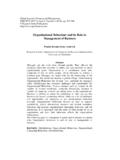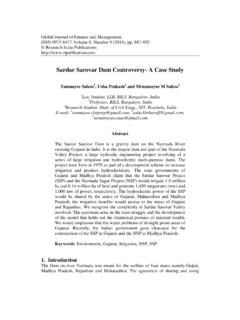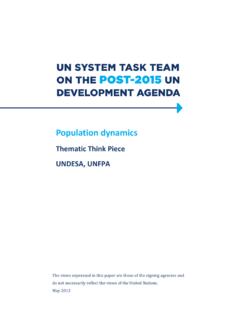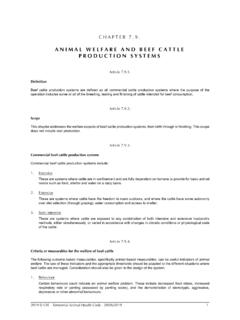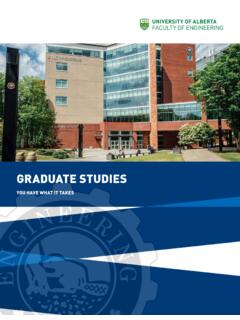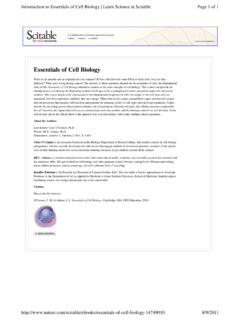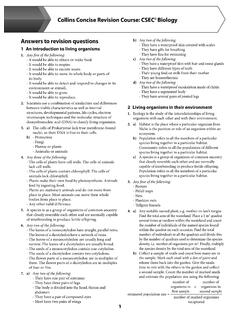Transcription of Biomimicry Nature Inspired Building Structures
1 Biomimicry Nature Inspired Building Structures Ar. Anjali Prashant Kshirsagar Asst. Professor, Deccan Institute of Technology, Kolhapur Shivaji University,Vidyanagar, Maharashtra, India. Ar. Seema Santosh Malani Asst. Professor, Deccan Institute of Technology, Kolhapur Shivaji University,Vidyanagar, Maharashtra, India. Er. Vikramsinh S. Tiware Asst. Professor, Bharati Vidyapeeth, Kolhapur Shivaji University,Vidyanagar, Maharashtra, India. Abstract From the beginning of creation, human being was surrounded by Nature . Everything in Nature is well organized and in harmony with the other parts of it. Through the history, Nature has been always a source of inspiration for the human begin in different aspects of their life. Architecture as one of the remarkable features in every society cannot be separated from Nature . Biomimicry is about solution refined and developed by Nature . Biomimicry is applicable to many aspects of the architectural, engineering, and material development fields, such as Building design, structure , materials and more.
2 The uses for Biomimicry have varied, however they all have had the same goal, which is to find answers and solutions through emulating Nature . For any sustainable Building design Biological organisms refined and developed by natural selection over a billion year research and development period can be seen as embodying technologies, functions, and systems that are solutions to the problem of surviving in Nature . Keywords: Biomimicry , Visual-Conceptual Inspiration, Nature Inspired Structures Introduction " Biomimicry or biomimetics is the examination of Nature , its models, systems, processes, and ements to emulate or take inspiration from in order to solve human problems. The term Biomimicry and biomimetics come from the Greek words bios, meaning life, and mimesis, meaning to imitate." In simpler terms, Biomimicry is the conscious emulation of Nature s genius Biomimicry is an applied science that derives inspiration for solutions to human problems through the study of natural designs, systems and processes.
3 Nature can teach us about systems, materials, processes, Structures and aesthetics (just to name a few). By delving more deeply into how Nature solves problems that are experienced today, timely solutions could be extracted and new directions for our built environments could be explored. In architecture, Biomimicry can be applied to improve the way the built environment is designed, through site work, construction, and daily operations, and to reduce the impact it has upon the natural environment through numerous strategies of reducing carbon emissions, waste and more. There are vast amounts of knowledge and ideas available to inform possible solutions to architectural design that will also allow designs to be more sustainable. In addition, there are several people involved in the field of Biomimicry that have provided insight on the subject and the number is growing as it is becoming more popular among designers looking to a more sustainable future.
4 In architectural design, there are several examples of Biomimicry that can be found ; although, many of these examples use it in different ways, and it is often considered not to be a total design solution but rather as a solution to a particular aspect of design. Michael Pawlyn, an architect that uses Biomimicry , has identified several ways in which Biomimicry can be applied to architectural design; such as, in his book, Biomimicry in Architecture, he identifies applications for water management, climate control, structural innovations, material developments, and energy In addition, there are other forms of Biomimicry ; biomorphic, bio-utilization, and Biomorphic is the mimicking of natural forms such as designing a Building to resemble the shape of a Bio-utilization is the more direct use of Nature for beneficial purposes such as using trees on a site to provide shading for windows.
5 Finally, biophilia is the idea that there is an instinctive bond between human beings and other living organisms which inspires the use of plants to create a comforting environment. Thus, Biomimicry , in the terms of architecture and use for this paper, is the emulating of biological forms, processes and systems found in Nature to produce architectural solutions that could be used for sustainable solutions. It is simple to understand that the homology between natural and man- made architectural forms can be seen while considering the biological systems and Structures . According to the definition of structure , the meaning of this word can be expressed as the arrangement or formation of the tissues, organs, or other parts of an organism Therefore, since Nature has unlimited time and International Journal of Engineering Research and Technology.
6 ISSN 0974-3154 Volume 10, Number 1 (2017) International Research Publication House 162 resources, due to its natural selection uses methods of infinite subtlety for its chemistry and control mechanism and therefore its progress in evolution was depending upon the development of stronger biological materials and more ingenious living system. Through history, the biological systems can be considered as a very well developed branch for architects, designers and engineers. Therefore, even a very simple and primitive kind of life can be considered as a delicately balanced. However, for the development of the natural forms the selection of the Nature can be considered as an accepted model for the latest designers and this explanation called according to the Darwin as natural selection . (Gordon, 1978) At least three kinds of inspiration can be renowned in architecture and design, and each kind plays different role.
7 All these three provide a spectrum whose understanding is critical for the progress in design. These three levels of inspiration are named as visual and conceptual. Visual Inspiration Visual inspiration is relatively well understood and widely used. In this case, picture of various living organisms, or their system, are used to create similarly looking engineering systems. Visual inspiration can produce useful result especially in architectural design from the aesthetic points of architecture. Visual Inspiration Architectural Example For example a picture of sea turtle shell can be used to shape a reinforced concrete for a large span roof structure in an exhibition Building . Unfortunately, it requires the involvement of a human designer who knows structural engineering and the theory of elastic shells, and who is able, most importantly, to avoid using inspiration in a wrong context.
8 In such a case, a visual can be incorrectly to produce a dangerous design. For example, the use of the same sea turtle shell shape (Figure ) to design a shear wall in a tall Building may result in a structure excessively sensitive to large vertical forces and may be ultimately dangerously unstable. Figure 1: turtle shell in Nature Figure 2: Exhibition hall Inspired from turtle shell Denver International Airport is another example of this kind of architecture. Denver The tensile fabric roof of this Building is designed by inspiration from the naturally occurring beauty of the Rocky Mountains. As the largest airport in the United States, it reflects a mixture of historic and modern architecture. Figure 3: Denver international airport in USA Figure 4: natural rocky mountain Selfridges Building in Birmingham, by architect Jan Kaplicky, founder of Future Systems, features a curvy space-age design that epitomizes what the aesthetic goal of bionic architecture is all about.
9 His idea was to combine the organic and natural forms with high technology to achieve the optimization. Completed in 2003, it remains one of the leading forward-thinking buildings out there. Figure 5: Bullring in Birmingham done by Jan Kaplicky International Journal of Engineering Research and Technology. ISSN 0974-3154 Volume 10, Number 1 (2017) International Research Publication House 163 Figure 6: Wasp nest structure Floating House in created by Robert Oshatz Inspired by Nature , Taking inspiration from ocean, the end result sits in harmony with its surroundings. Oshatz is known for his curvaceous, swooping architecture and unique approach to design. Since active construction is prohibited on the Willamette, Oshatz had to construct the home off-site on the connected Columbia River and pull it by barge to its mooring.
10 This unique home is kept afloat by locally sourced 80-foot Douglas fir logs, and the exterior design takes its cue from ocean waves. Figure 7: floating House and its natural concept Conceptual Inspiration Conceptual inspiration occurs when a structural engineer uses a principle found in Nature in design, for example, the biological principle of homeostasis. This principle states that any living organism reacts correspondingly to recover its vital functions when attacked by an external agent. A designer can apply this principle, for example, to determine the optimal shape of shell roofs subjected to thermal and mechanical loads. Unfortunately, using conceptual inspiration requires a solid understanding of both Nature and structural engineering and cannot be used in a mechanistic way by an automated designing system. Visual inspiration is skin-deep.

